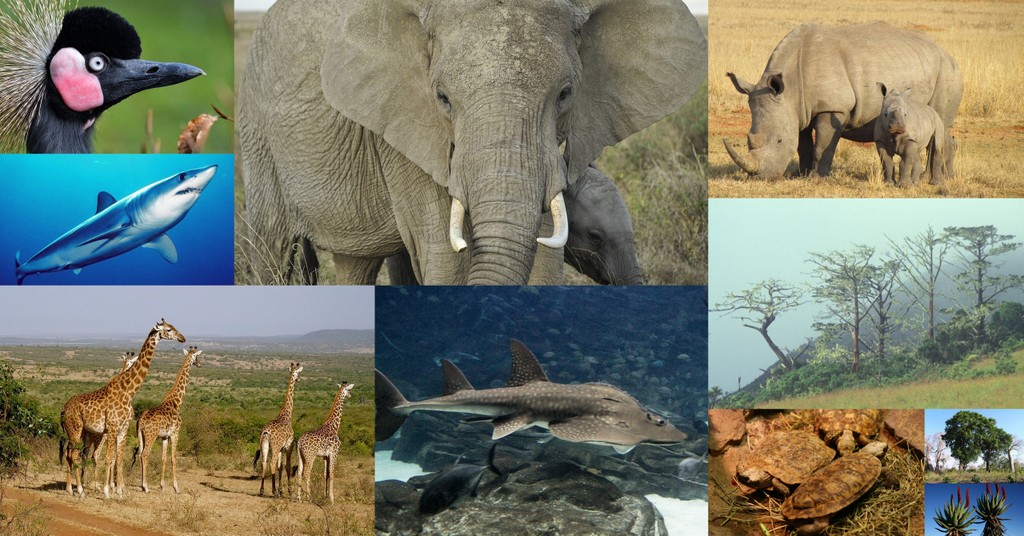
NEWS DESK POST by AG Editorial
The CITES 18th Meeting of the Conference of the Parties (CoP18) in Geneva, Switzerland has now come to an end, and a number of controversial proposals for trade have been settled. Some of the decisions have not been well-received by African range state governments, as they restrict or prevent these countries’ ability to generate much-needed revenue that could be used for conservation purposes.
These meetings occur roughly every three years, and amendments to the international trade rules can have profound conservation implications for affected species.
The listing of a species in Appendix I includes species threatened with extinction that are or may be affected by trade, and effectively prevents commercial international trade, except under exceptional circumstances. Species listed in Appendix II are not necessarily threatened with extinction, but may become so unless trade in specimens of such species is subject to strict regulation. They can be traded under special permit conditions. Appendix III is for species which any Party identifies as being subject to regulation within its jurisdiction for the purpose of preventing or restricting exploitation, and as needing the co-operation of other Parties in the control of trade.
Below is the list of the results of the proposals that affect species occurring in Africa and the continent’s coastal waters.
MAMMALS
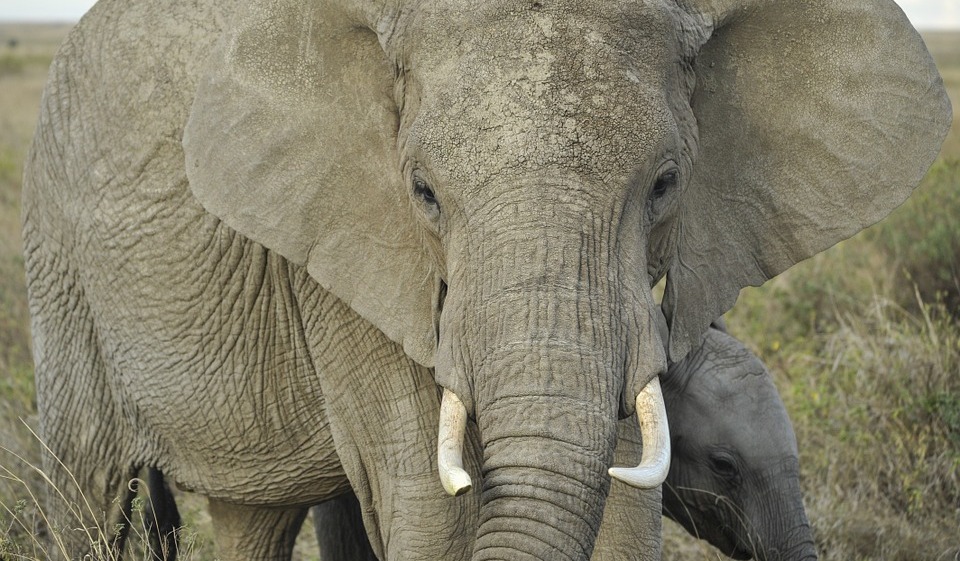
African elephant (Loxodonta africana)
Three proposals out of the 56 submitted by governments to change the levels of protection of species of wild animals pertained to the African elephant and ivory poaching. Below are the three proposals:
PROPOSAL 10: Transfer the population of Loxodonta africana of Zambia from Appendix I to Appendix II
PROPONENT: Zambia
SUMMARY OF PROPOSAL: Transfer the population of Loxodonta africana of Zambia from Appendix I to Appendix II subject to:
• Trade in registered raw ivory (tusks and pieces) for commercial purposes only to CITES approved trading partners who will not re-export;
• Trade in hunting trophies for noncommercial purposes;
• Trade in hides and leather goods;
• All other specimens shall be deemed to be specimens of species in Appendix I and the trade in them shall be regulated accordingly.
DECISION BY CITES COMMITTEE: REJECTED
PROPOSAL 11: Amendment to Annotation 2 of Appendix II pertaining to the elephant populations of Botswana, Namibia, South Africa and Zimbabwe to enable resumption of trade in registered raw ivory
PROPONENTS: Botswana, Namibia and Zimbabwe
SUMMARY OF PROPOSAL: Amendment to Annotation 2 of Appendix II pertaining to the elephant populations of Botswana, Namibia, South Africa and Zimbabwe to enable resumption of trade in registered raw ivory:
• From government owned stocks (excluding seized and of unknown origin);
• Only to trading partners verified by the Secretariat;
• Proceeds only to be used to fund elephant conservation and community conservation and development programmes.
DECISION BY CITES COMMITTEE: REJECTED
PROPOSAL 12: Include all populations of Loxodonta africana in Appendix I through transferring populations of Botswana, Namibia, South Africa and Zimbabwe from Appendix II to Appendix I
PROPONENTS: Burkina Faso, Côte d’Ivoire, Gabon, Kenya, Liberia, Niger, Nigeria, Sudan, Syrian Arab Republic, Togo
DECISION BY CITES COMMITTEE: REJECTED
In addition, three documents relating to elephants were considered: 1) trade in live African elephants; 2) closure of domestic ivory markets; and 3) management of ivory stockpiles.
THE OUTCOMES OF THE THREE DOCUMENTS ARE AS FOLLOWS:
• There is now a total ban on the trade in live, wild-caught African elephants to destinations outside of the African elephant range, with limited exceptions. This means that zoos will no longer be able to import wild-caught African elephants from Africa to their facilities in the United States, China, and many other countries outside the natural habitat of the species. Only in “exceptional circumstances” may elephants be exported beyond their natural range.
• Countries that have not closed the domestic trade in raw and worked ivory must provide details of measures they are taking to ensure that the domestic trade is not contributing to poaching or illegal trade.
• Countries are required to maintain and report annually on their ivory stockpiles, or face sanctions.
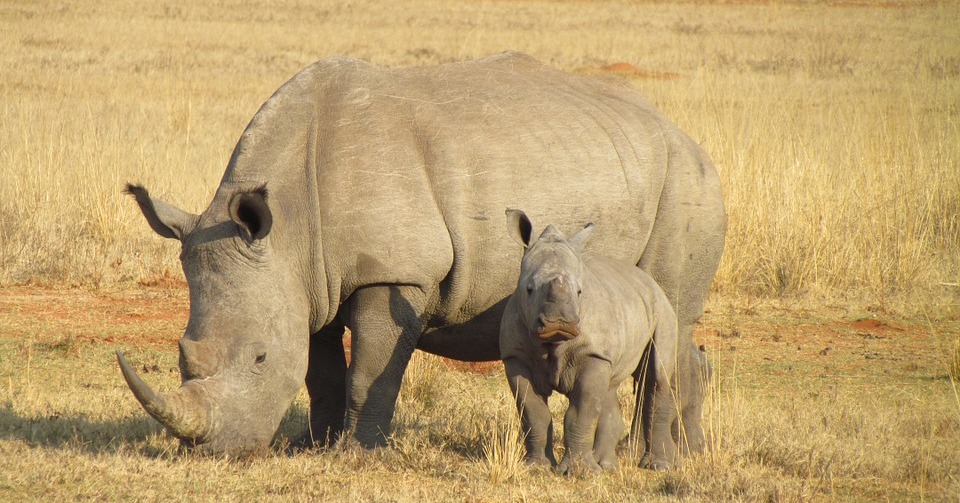
Southern white rhinoceros (Ceratotherium simum simum)
The proposals by Eswatini (formerly Swaziland) and Namibia to loosen restrictions on the trade in live rhinos and rhino parts was voted against by the members of the CITES committee.
PROPOSAL 8: Remove the existing annotation for the population of Eswatini
PROPONENTS: Eswatini
SUMMARY OF PROPOSAL: Remove the existing annotation on the Appendix II listing of Eswatini’s white rhino population, which would allow:
• International trade in rhinos and their products – including horn and derivatives.
• Rhino horn to be sold from existing stock to licensed retailers in the Far East, plus up to 20 kg per annum, including harvested horn, to those retailers.
DECISION BY CITES COMMITTEE: REJECTED
PROPOSAL 9: Transfer the population of Namibia from Appendix I to Appendix II
PROPONENTS: Namibia
SUMMARY OF PROPOSAL: Change the CITES status of Namibia’s white rhino population from Appendix I to Appendix II , which would allow international trade in:
• Live animals to appropriate and acceptable destinations; and
• Hunting trophies.
DECISION BY CITES COMMITTEE: REJECTED
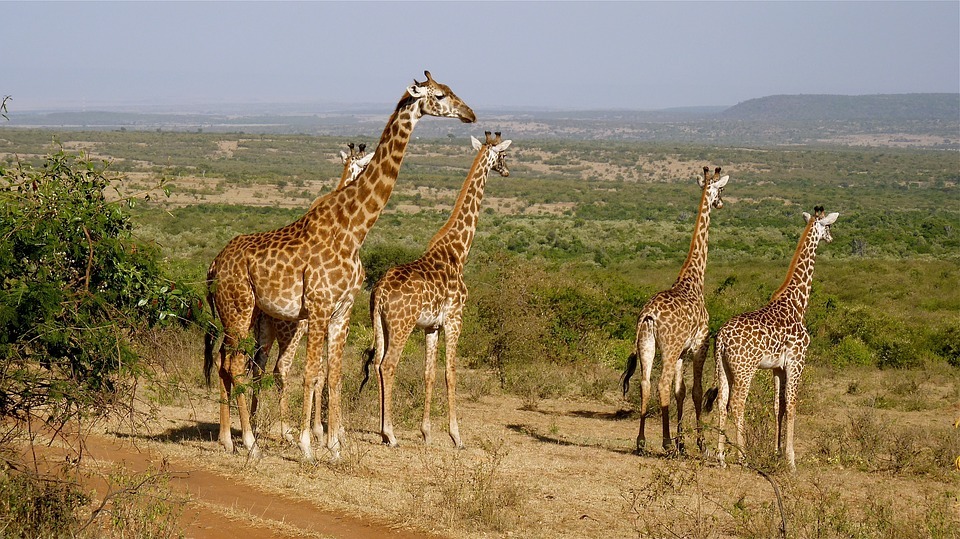
Giraffe (Giraffa Camelopardalis)
Giraffes have been given their first ever international protection through a new Appendix II designation. This means that international trade in giraffe parts, such as hides, bones and meat, will be regulated to ensure that it is not detrimental to the survival of the species.
PROPOSAL 5: Include in Appendix II
PROPONENTS: Central African Republic, Chad, Kenya, Mali, Niger, and Senegal
SUMMARY OF PROPOSAL: Place all seven species and subspecies of giraffes under the protection of Appendix II.
DECISION BY CITES COMMITTEE: ACCEPTED


BIRDS
Black crowned-crane (Balearica pavonina)
PROPOSAL 19: Transfer from Appendix II to Appendix I
PROPONENTS: Burkina Faso, Côte d’Ivoire and Senegal
SUMMARY OF PROPOSAL: Transfer the black-crowned crane from Appendix II to I, to prohibit international trade in the species.
DECISION BY CITES COMMITTEE: ACCEPTED
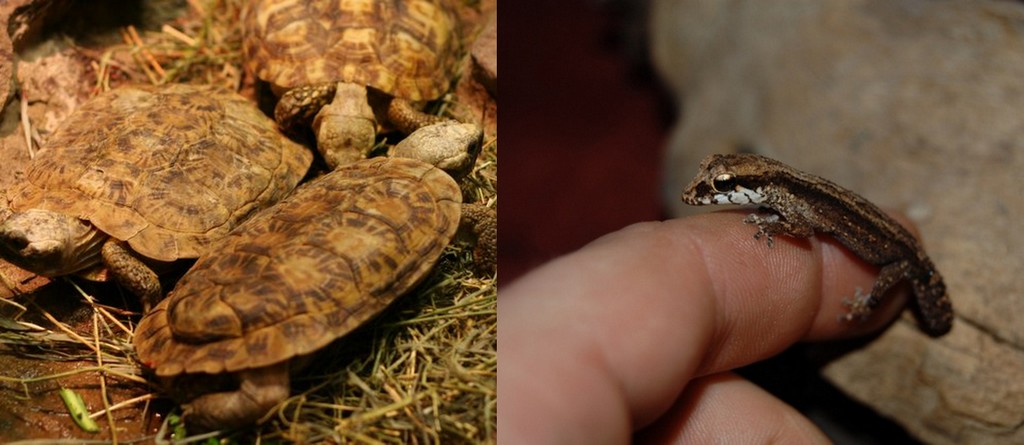
REPTILES
Grandidier’s Madagascar ground gecko (Paroedura androyensis)
PROPOSAL 30: Include in Appendix II
PROPONENTS: European Union and Madagascar
SUMMARY OF PROPOSAL: List the gecko under Appendix II in order to have more control over its trade.
DECISION BY CITES COMMITTEE: ACCEPTED
Pancake tortoise (Malacochersus tornieri)
PROPOSAL 37: Transfer from Appendix II to Appendix I
PROPONENTS: Kenya and United States of America
SUMMARY OF PROPOSAL: Transfer from Appendix II to Appendix I due to the high demand in the international pet trade and its status as ‘Critically Endangered’ by the IUCN Red List .
DECISION BY CITES COMMITTEE: ACCEPTED
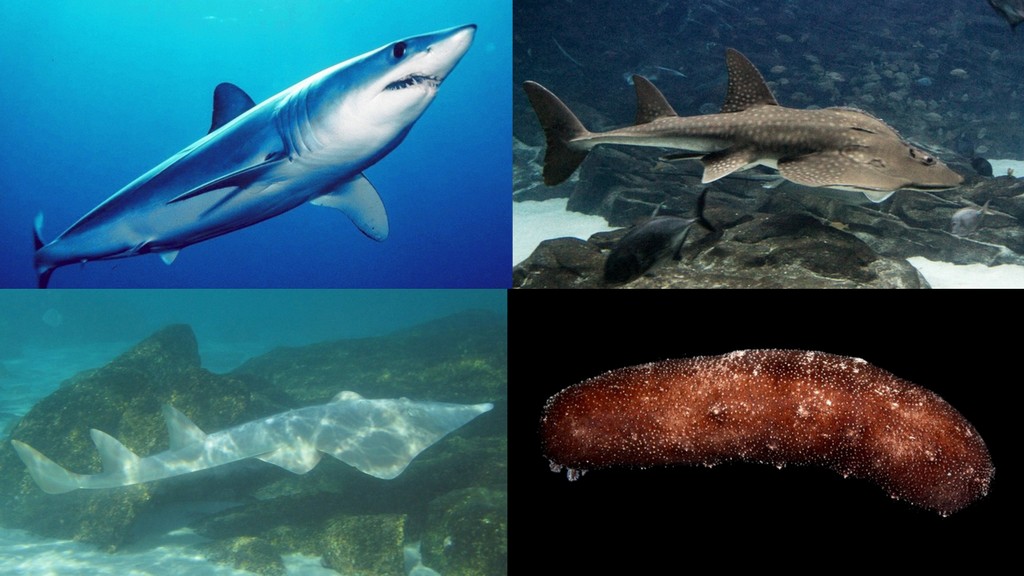
MARINE
Mako sharks (Isurus oxyrinchus, Isurus paucus)
PROPOSAL 42: Include in Appendix II
PROPONENTS: Bangladesh, Benin, Bhutan, Brazil, Burkina Faso, Cabo Verde, Chad, Côte d’Ivoire, Dominican Republic, Egypt, European Union, Gabon, Gambia, Jordan, Lebanon, Liberia, Maldives, Mali, Mexico, Nepal, Niger, Nigeria, Palau, Samoa, Senegal, Sri Lanka, Sudan, and Togo
SUMMARY OF PROPOSAL: Place mako sharks under Appendix II in order to regulate trade. This will ensure that the harvest of specimens from the wild is not reducing the wild population to a level at which its survival might be threatened by continued harvesting.
DECISION BY CITES COMMITTEE: ACCEPTED
Guitarfish (Glaucostegus spp.)
PROPOSAL 43: Include in Appendix II
PROPONENTS: Bangladesh, Benin, Bhutan, Brazil, Burkina Faso, Cabo Verde, Chad, Côte d’Ivoire, Egypt, European Union, Gabon, Gambia, Maldives, Mali, Mauritania, Monaco, Nepal, Niger, Nigeria, Palau, Senegal, Sierra Leone, Sri Lanka, Syrian Arab Republic, Togo, and Ukraine
SUMMARY OF PROPOSAL: Place guitarfish species under Appendix II in order to regulate trade. This will ensure that the harvest of specimens from the wild is not reducing the wild population to a level at which its survival might be threatened by continued harvesting.
DECISION BY CITES COMMITTEE: ACCEPTED
Wedgefish (Rhinidae spp.)
PROPOSAL 44: Include in Appendix II
PROPONENTS: Bangladesh, Benin, Bhutan, Brazil, Burkina Faso, Cabo Verde, Chad, Côte d’Ivoire, Egypt, Ethiopia, European Union, Fiji, Gabon, Gambia, India, Jordan, Kenya, Lebanon, Maldives, Mali, Mexico, Monaco, Nepal, Niger, Nigeria, Palau, Philippines, Saudi Arabia, Senegal, Seychelles, Sri Lanka, Sudan, Syrian Arab Republic, Togo, and Ukraine
SUMMARY OF PROPOSAL: Place wedgefish species under Appendix II in order to regulate trade. This will ensure that the harvest of specimens from the wild is not reducing the wild population to a level at which its survival might be threatened by continued harvesting.
DECISION BY CITES COMMITTEE: ACCEPTED
Sea cucumbers (Holothuria (Microthele) fuscogilva, Holothuria (Microthele) nobilis, Holothuria (Microthele) whitmaei)
PROPOSAL 45: Include in Appendix II
PROPONENTS: European Union, Kenya, Senegal, Seychelles and United States of America
SUMMARY OF PROPOSAL: To regulate the trade in sea cucumbers to ensure that harvest from the wild is not reducing population to a level where survival might be threatened by continued harvest or other influences.
DECISION BY CITES COMMITTEE: ACCEPTED AS AMENDED

FLORA
Mulanje cedar (Widdringtonia whytei)
PROPOSAL 50: Include in Appendix II
PROPONENTS: Malawi
SUMMARY OF PROPOSAL: This species faces numerous threats, the most serious of which are changing fire regimes, fuelwood collection, illegal logging, invasive tree species and conifer aphids. Placing under Appendix II will provide additional protection.
DECISION BY CITES COMMITTEE: ACCEPTED
Afromosia (Pericopsis elata)
PROPOSAL 53: Amend annotation #5 for Pericopsis elata
PROPONENTS: Côte d’Ivoire and European Union
SUMMARY OF PROPOSAL: Afromosia is a highly valued timber native to Central and West Africa. It is currently listed under Appendix II with the annotation #5 which restricts the listing to “logs, sawn wood and veneer sheets”. However, loop holes have been discovered where traders from range States have been exporting sawn wood with minor, superficial transformations in order to circumvent CITES controls. The proposal now wants the annotation to be changed so that it includes transformed wood (and plywood), as follows: “Logs, sawn wood, veneer sheets, plywood, and transformed wood.”
DECISION BY CITES COMMITTEE: ACCEPTED
African padauk (Pterocarpus tinctorius)
PROPOSAL 54: Include in Appendix II
PROPONENTS: Malawi
SUMMARY OF PROPOSAL: Place the species under Appendix II to help in the trade and harvest regulations.
DECISION BY CITES COMMITTEE: ACCEPTED AS AMENDED
Bitter aloe (Aloe ferox)
PROPOSAL 55: Include in Appendix II
PROPONENTS: South Africa
SUMMARY OF PROPOSAL: amend part f) of annotation #4, so that it includes Aloe ferox as part of the finished product.
DECISION BY CITES COMMITTEE: ACCEPTED AS AMENDED
To comment on this story: Login (or sign up) to our app here - it's a troll-free safe place 🙂.![]()






